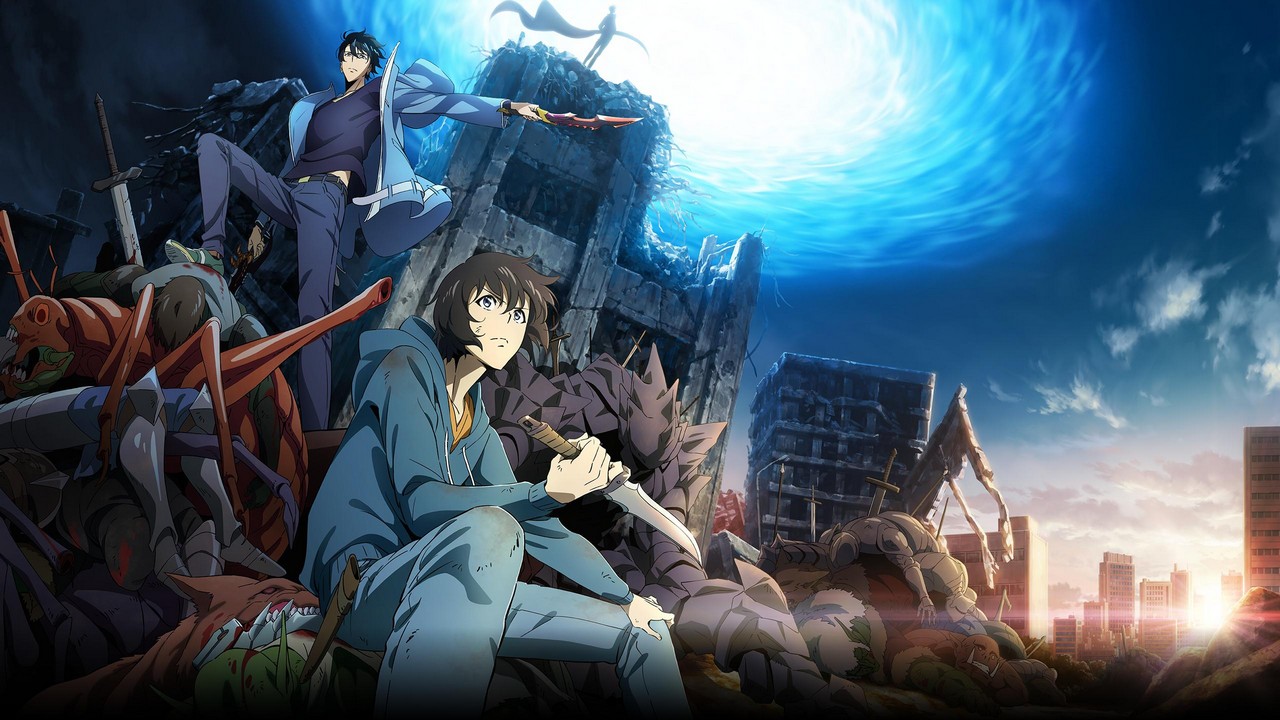Wind Breath is one of the combat techniques featured in Demon Slayer: Kimetsu no Yaiba. It has a total of 9 different forms, all of which use the air around the warrior to generate blows and powerful gusts of wind. It is one of the main Breaths in the series, so how about finding out the details about all the forms of Wind Breath?
Its main user is the Hashira of the Wind, Sanemi Shinazugawa, and this Breath gave rise to two derivations: the Breath of the Mist and the Breath of the Beast. Unfortunately, we've only seen all the forms of the Wind Breath in the manga, so if you haven't read it yet, be warned of minor spoilers. On to the list?
First Form: Whirlwind of Cutting Dust

In the first of all the Wind Breath forms, the user's movements are very fast as the swordsman faces his opponent directly. The blows delivered in this form look very much like cyclones that cut through and destroy everything in their field of attack. In Japanese, the first form of Wind Breath is called "Ichi no kata: Jin Senpū - Sogi".
Second Form: Purifying Wind Claws
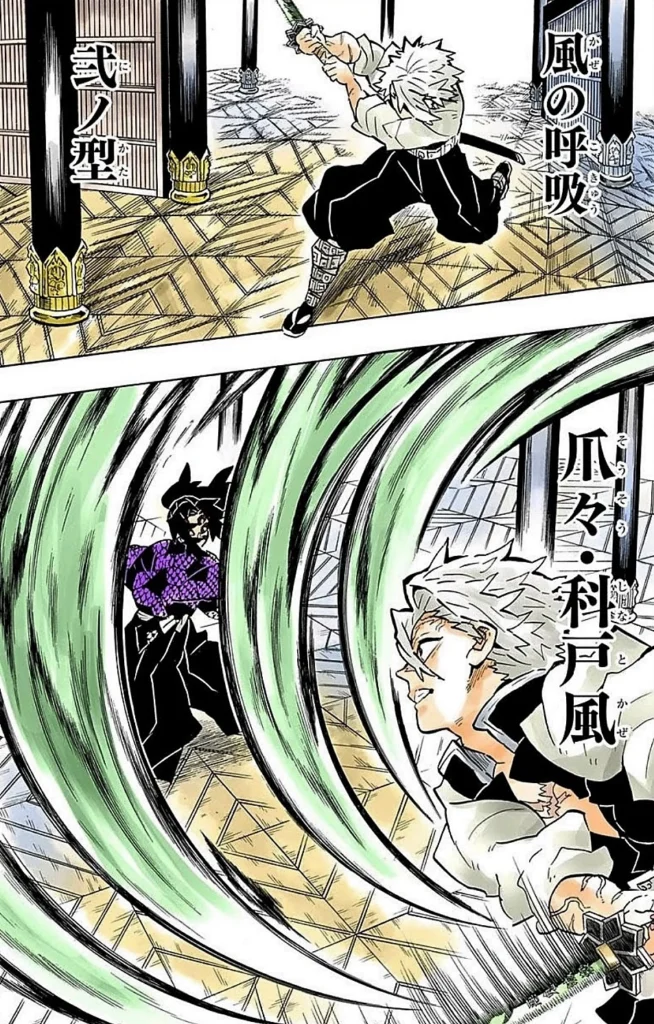
The second form of this breath is also originally called Ni no kata: Sōsō - Shinato Kaze and works as a quadruple attack on the enemy. Of all the Wind breaths, in this one the user positions his sword to the right above his head and fires four vertical blows in the "up-down" direction. The difference is that the attacks hit the target like powerful claws.
Third Form: Clear Wind Tree
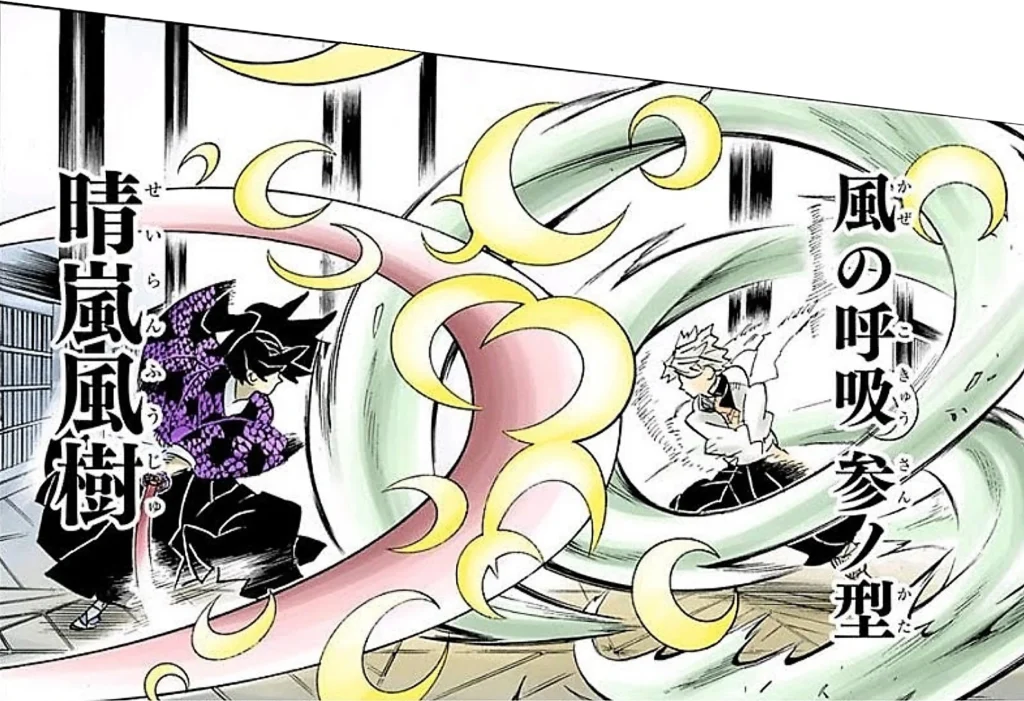
In San no kata: Seiran Fūju (the third form of Wind Breath), Sanemi strikes many blows around his own body, making himself the center of a cyclone that swirls around him. Of all the forms of Wind Breath, this one is most effective when used in defense, cutting down anyone who gets too close or blocking enemy attacks.
Fourth Form: Rising Dust Storm
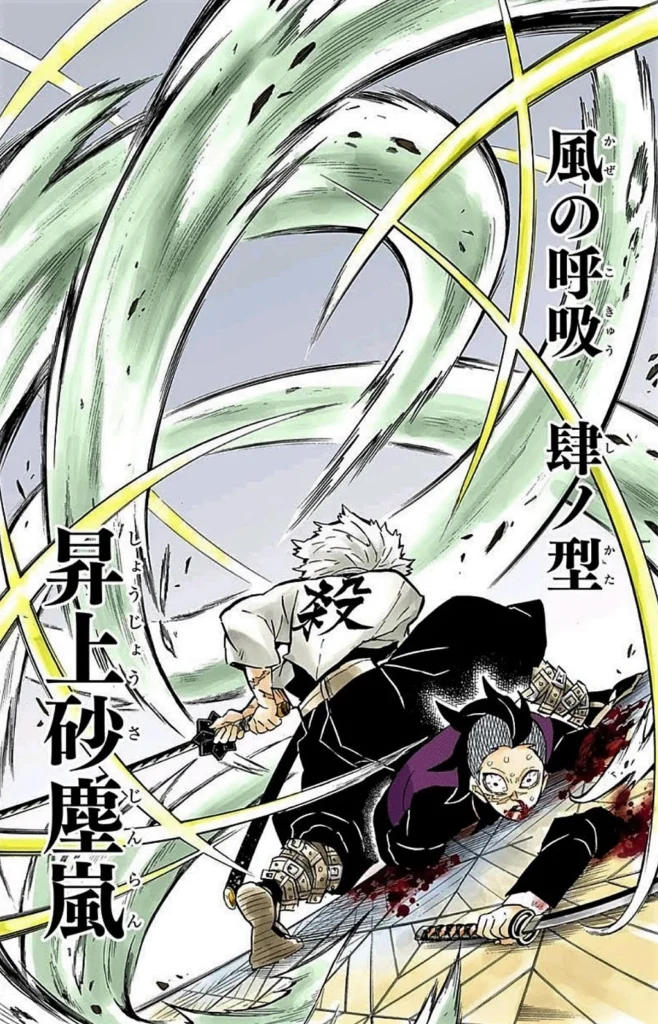
Also known as Shi no kata: Shōjō Sajinran, the fourth form consists of a sequence of many blows that are thrown in all directions, without a fixed target. As with the third form, this is another of the Wind Breath forms that works as a defense, blocking opponents' attacks.
Fifth Form: Cold Mountain Wind
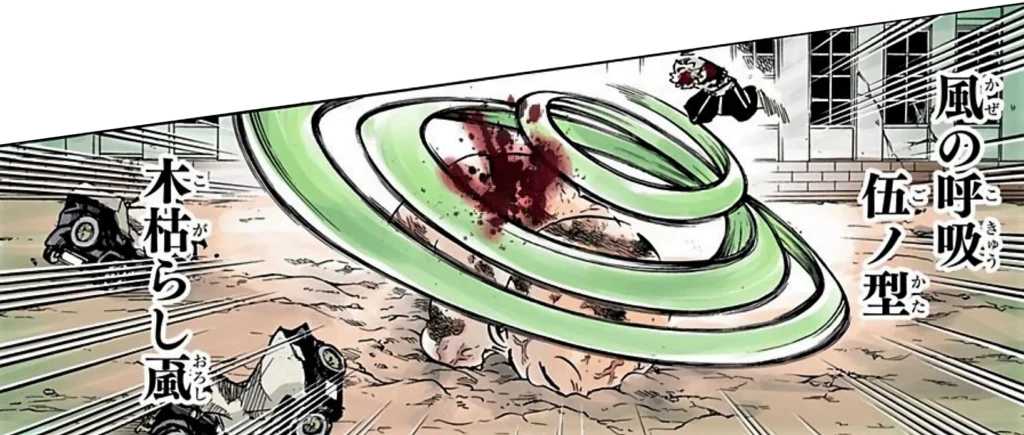
Of all the forms of Wind Breath, the fifth form - Go no kata: Kogarashi Oroshi - is one of the simplest to perform, as the swordsman makes countless circular movements with his sword, creating several growing arcs that surround his opponent. Trying to dodge them can be very dangerous, as these arcs are very sharp!
Sixth Form: Black Wind Mountain Mist
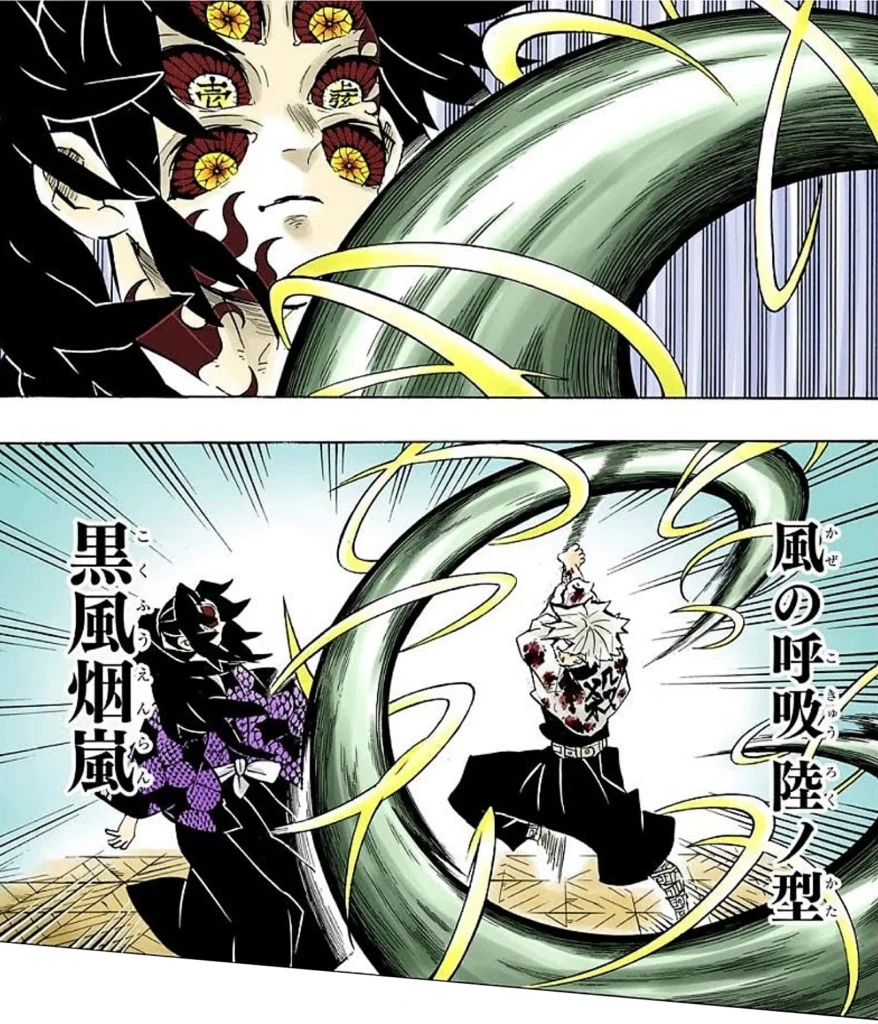
This is the sixth form of Wind Breath and Sanemi needs to be very agile to be able to get very close to his opponent and deliver powerful blows from the bottom up. Originally, this form was called Roku no kata: Kokufū Enran and, of all the Wind Breath forms, this is the only one that appears to be darker in color.
Seventh Form: Sudden Gusts
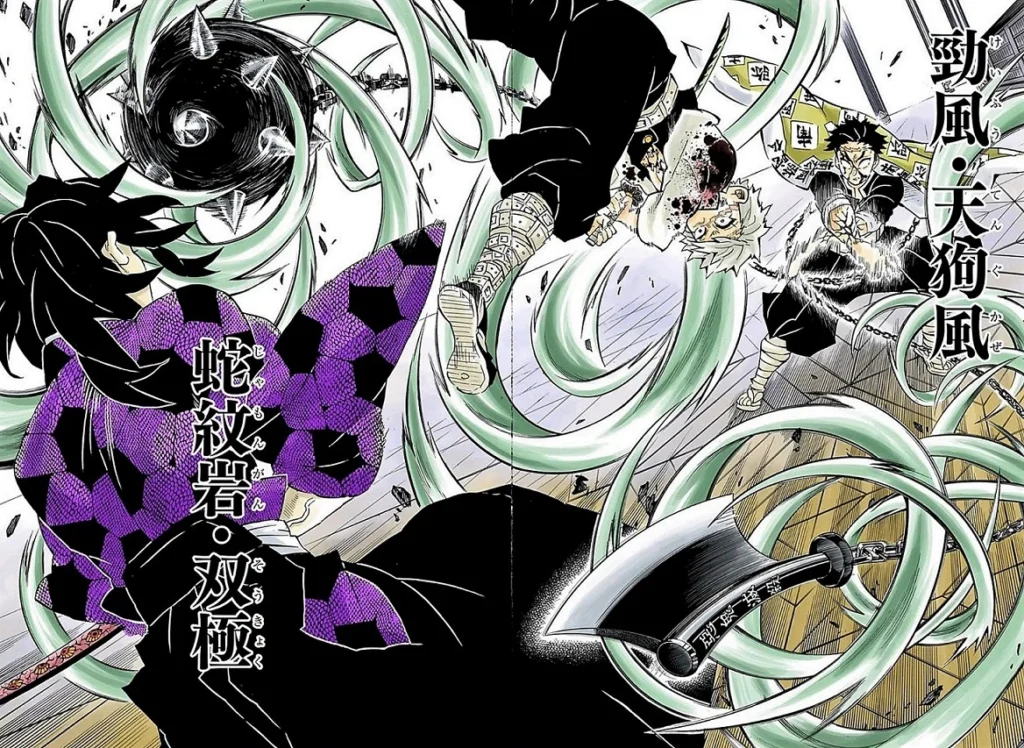
Shichi no kata: Keifū - Tengu Kaze or Sudden Gusts is the seventh form of Wind Breath and this time Sanemi needs to attack from the air to be able to use it. Of all the forms of Wind Breath, this one creates several cutting cyclones in sequence that are capable of both injuring their targets and potentiating other attacks if he fights with the help of another warrior.
Eighth Form: Primary Wuthering Cut
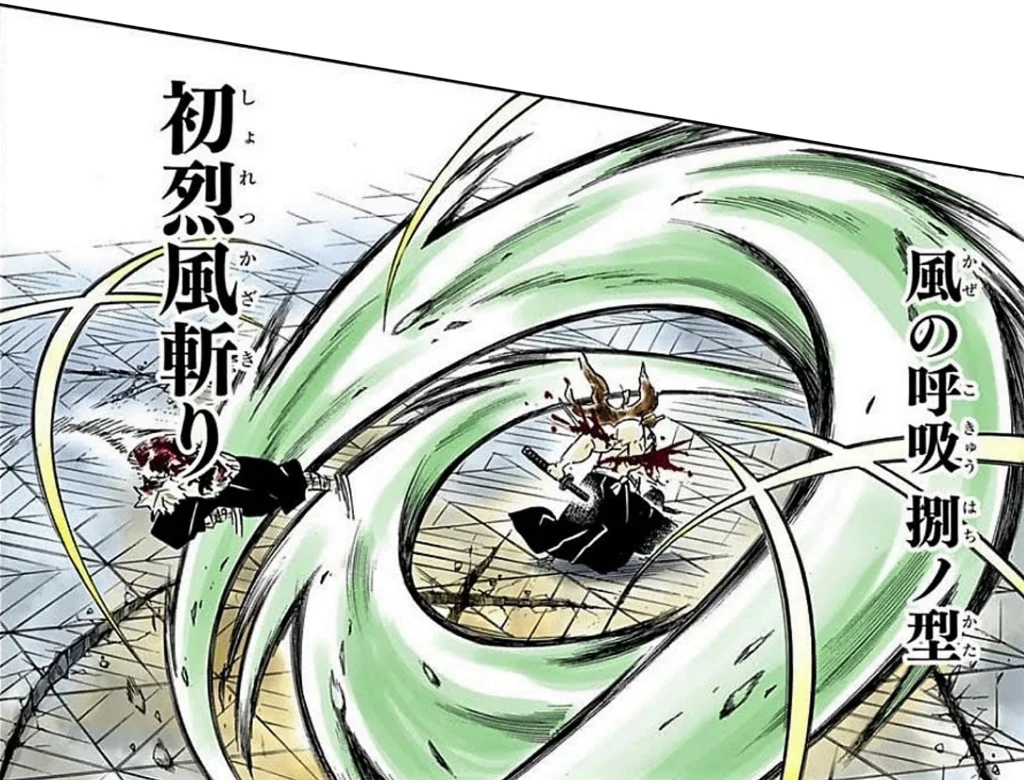
In the eighth form we have yet another "aerial" attack, the result of jumping in conjunction with blows made by its user. Here, the swordsman leaps towards his target while firing powerful attacks that form circular winds. Of all the forms of Wind Breath, this one is capable of disorienting the opponent and is originally called Hachi no kata: Sho Rekkaza Kiri.
Ninth Form: Typhoon Idaten
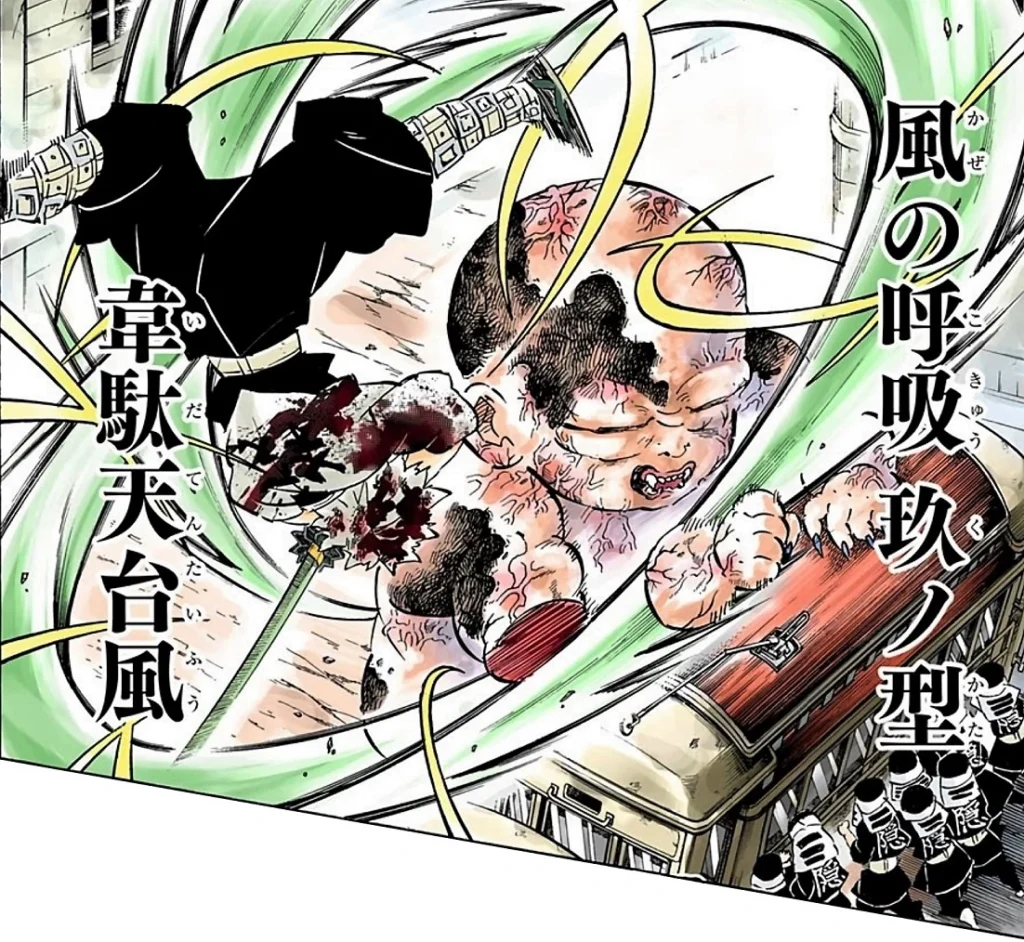
Na Ku no kata: Idaten Taifū is the last of the Wind Breath forms, in other words, the ninth form. No less important than the previous ones, in this attack Sanemi jumps upside down, getting into a position to unleash many blows in succession against his target. These strikes are circular and are performed from top to bottom.
How all the forms of Breath of the Wind contributed to the advancement of the plot
Although he hasn't appeared in the anime yet Demon Slayer: Kimetsu no YaibaIn the manga, we can see Sanemi Shinazugawa exploiting all the techniques and this was fundamental for the Onis Hunters to advance in the final arc and defeat the Demon King. In the manga we can see Sanemi Shinazugawa exploiting all the techniques and this was fundamental for the Onis Hunters to advance in the final arc and, above all, to defeat the Demon King, Muzan.
But have you read the manga or are you waiting for Breath of the Wind to be adapted into an anime? Share your experience with us in the comments! If you liked this article, you'll definitely want to check out more about All Thunder Breathing Forms in Demon Slayer!


